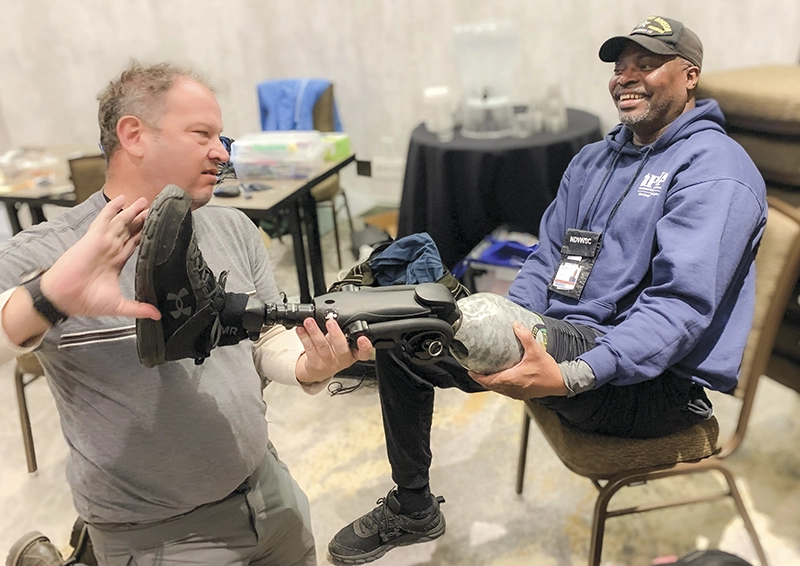
When a child died because of a snap decision he made in the Iraq War, John Wade just couldn’t forgive himself.
“I was kind of my own judge and jury,” says Wade, a 17-year Army veteran. “I told myself, ‘You just don’t deserve to live.’”
He attempted suicide several times after leaving the service. But when he nearly died in a truck accident in 2018, something unexpected happened: Wade battled hard to stay alive.
“I was coming off the interstate, and the brakes wouldn’t engage,” he says. “There were some cars stopped at the end of the ramp, and I thought, ‘I’m not gonna hurt anybody else.’ So I drove off into some trees, and I got crushed inside the cab. It was really hard to breathe, and I was just focused on taking the next breath. I even remember thinking, ‘This is so ironic.’ I had tried to take my own life, but I was fighting to live.”
Wade lost his left leg above the knee, among many other injuries. One night he got out of his hospital bed, tried to walk to the bathroom, and wound up on the floor.
“I forgot I didn’t have my leg,” he says. “It hit me that this was going to be my reality for the rest of my life. I wasn’t sure how I felt about that. So I thought, ‘I can either get busy living or get busy dying.’”
He chose living, Wade says, because after gutting it out at the crash scene, “I started respecting myself for the first time ever.” Although he doesn’t say so, Wade might also have recognized that his snap decision on the exit ramp saved innocent lives rather than costing them. Perhaps that allowed him, finally, to leave Iraq behind.
“I just thought, life is really short,” he says. “There’s a lot I haven’t done, and I gotta get it in.”
A week after he got his first prosthesis, Wade went skydiving. He took up skiing. He started taking speaking engagements and connecting with other veterans. One thing led to another, and in 2022 he got recruited by the Cleveland VA to test a first-of-its-kind neuroprosthetic leg. The device communicates directly with Wade’s nervous system via electrical leads implanted in his residual limb.
“They’re building a robotic leg that I can articulate the ankle and the foot just by thinking about it,” he explains. “They connect me to different gadgets and send electrical signals to see if I can feel it. Every time I go in, we’re getting brand-new data. There’s no precedent. We’re pretty much mapping my sciatic nerve—sometimes painfully so.”
Wade felt nothing but joy one day last year when, during a session on the treadmill, he could “feel” his bionic left foot for the first time. “I got very emotional,” he says. “It’s like my brain picked up right where it left off. Exactly like I remembered it.”
The project has drawn camera crews from 60 Minutes. There’s also a Hollywood star—an Oscar nominee, somebody you’d recognize—trying to finance a documentary about Wade.
“Everything we encounter is an opportunity in disguise,” he says. “Before this whole thing happened, I wanted to be that guy in Castaway and just live on my own little island. Now it’s just the opposite. I’m living my best life. Who would have thought that could happen after an amputation?”
May is Military Appreciation Month. Find resources for amputee veterans in the Community Resource Directory.




